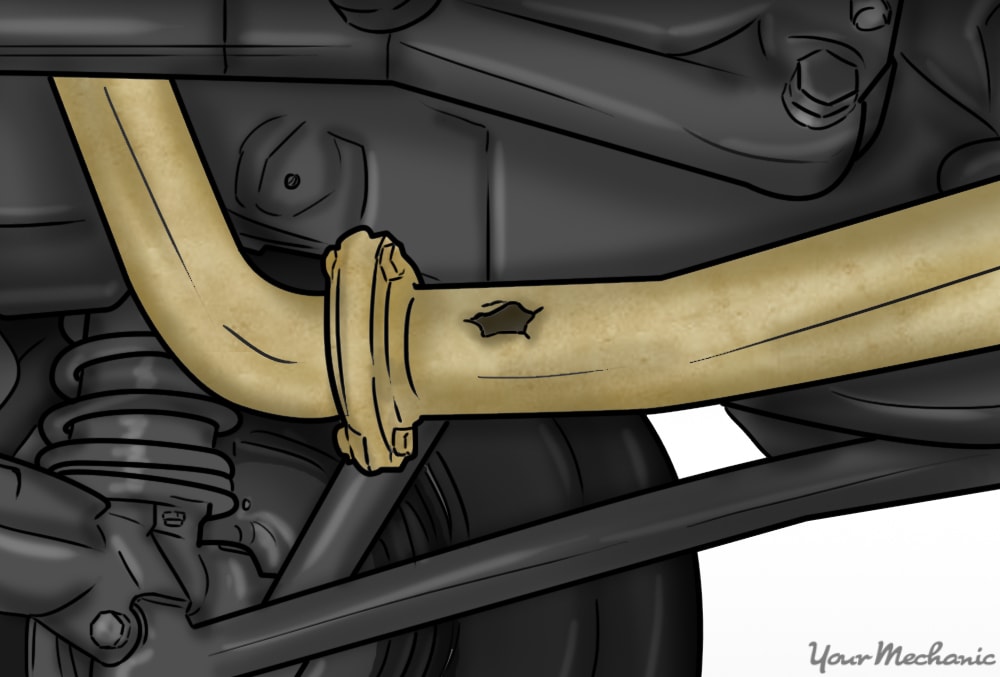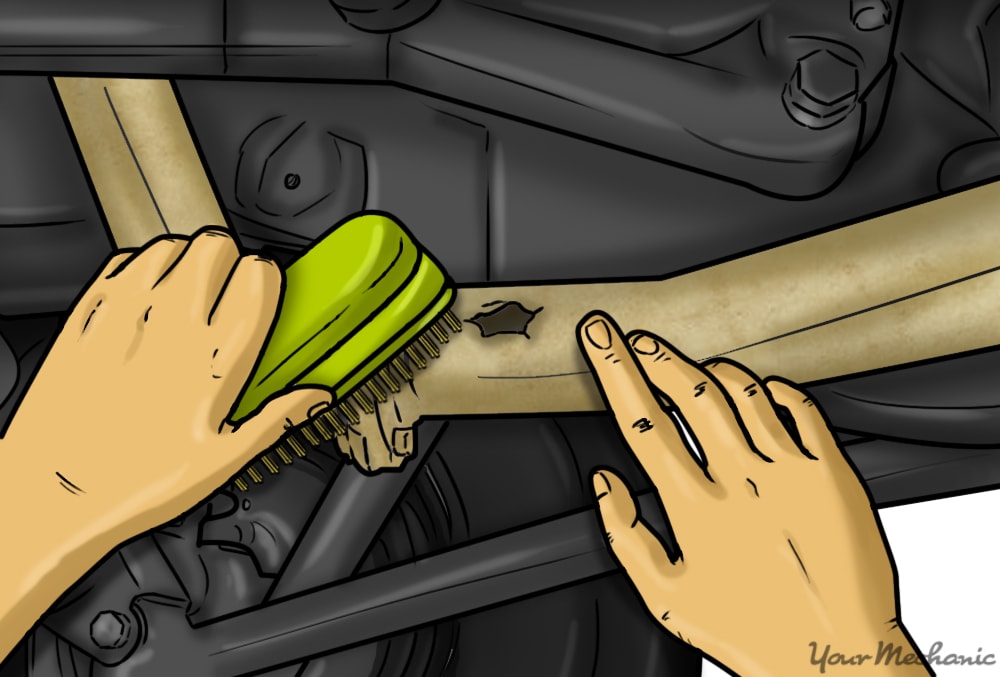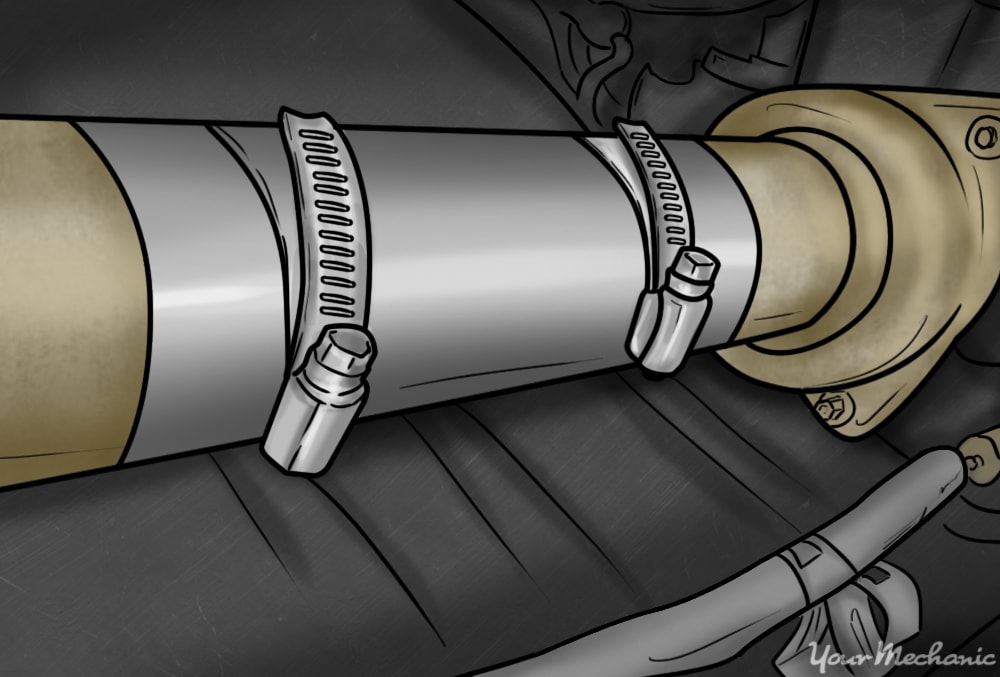

Your vehicle’s exhaust system is made of the exhaust manifold, catalytic converter, resonator, muffler and of course the piping to connecting it all together. Throughout the day, your vehicle’s exhaust system is constantly being exposed to various elements due to day to day activities. These include road debris, hot weather, and, if you live in colder climates, snow, ice and salt. Prolonged exposure to these conditions can cause your vehicle’s exhaust piping to develop holes and cracks in the system over time.
If you notice that your vehicle is sounding noisier than normal, or if you see black stains indicative of exhaust gases escaping, then chances are that you have an exhaust leak on your hands.The good news is, properly done repairs are relatively easy and last quite a long time, saving you money in costly repairs. This is a straightforward repair that should take anywhere from 30 to 60 minutes to perform - and in most cases, the materials needed can be found around the house, making it a cheap or even free repair.
Part 1 of 1: Repairing your exhaust pipe
Materials Needed
- Gloves
- Flashlight
- Floor jack
- Muffler repair tape
- Safety glasses
- Safety jack stands x2
- Screwdriver
- Stainless steel hose clamps x2
- Soda can (empty)
- Steel wool
- Tin snips
- Wire brush
Step 1: Raise the vehicle off the ground. Use the floor jack to raise just the drivers side of the vehicle, keeping the tires on the passenger side on the ground.
Secure the entire driver's side of the vehicle in the air with two safety jack stands.
This will give you enough room to move around under your vehicle. If your exhaust is off center and runs down the passenger side of the vehicle, simply raise the passenger side instead for a maximum work space.
Step 2: Locate the exhaust leak on the vehicle. Put on safety glasses and slide under the vehicle to visually inspect your exhaust system with a flashlight.
Often, the damaged portion of the exhaust piping will be facing the ground due to the most exposure. In some cases, however, there can be holes and cracks on the top side of the exhaust, facing the underside of your vehicle.
If you are unable to find damage facing the ground, start the vehicle and listen for the exhaust leak. Use an inspection mirror to pinpoint the source of the leak.
- Tip: If you do not have a mirror, use your hand to feel for exhaust gases escaping the portion of the exhaust in question. Just take care to keep your hand in motion and do not directly touch the exhaust pipe.
This allows the surface to be cleaned easily, as well as allowing the adhesive from the repair tape to stick to the exhaust.
Step 3: Prepare the exhaust surface for repair. Once the leak is discovered, the next step is getting the exhaust piping warm, preferably over 80 degrees Fahrenheit.
Use safety gloves to protect your hands from the hot exhaust and use a wire brush to clean the damaged area. Be sure to get all of the surface up to an inch past the damaged area.
Step 4: Cover the hole with steel wool. Take a piece of steel wool and cover the damaged area of the exhaust pipe.
Step 5: Apply repair tape to the damaged area. Get the repair tape and remove the backing to expose the sticky side. Carefully wrap it around the damaged area securing the steel wool to the exhaust pipe.
Step 6: Cut the empty soda can to fit around your exhaust pipe. Use the tin snips to cut the top and bottom off of your soda can and then cut the can lengthwise, down the center.
This will give you a nice size rectangular piece of aluminum with a built in curve to easily go around your exhaust pipe repair, covering the steel wool and repair tape.
Step 7: Secure the soda can around the pipe. Take the hose clamps and use one at each end of the soda can to secure it to the exhaust pipe.
Step 8: Activate the adhesive repair tape. Start your vehicle let it idle for 15 minutes to allow the adhesive on the repair tape to activate and adhere to the exhaust pipe.
- Tip: When exhaust piping develops cracks or holes, it never happens the same way, so sometimes you may need to get a little creative with the way you apply the repair tape.
Step 9: Test drive to check completion of repair. Use your floor jack to remove the safety jack stands and lower your vehicle to the ground.
Start the vehicle and take it for a test drive to confirm your repair is complete. Your engine should be quiet, and the exhaust should sound smooth.
If everything sounds and feels great, then you can rest assured that the repair is complete - and take pride in the fact that you repaired your exhaust pipe on your own. By tackling repairs like this on your own, you can not only save money and time, but gain hands on knowledge about your vehicle. If you are unable to complete the repair by yourself, one of our certified mechanics at YourMechanic will be happy to come out to your location to replace your exhaust pipe.








